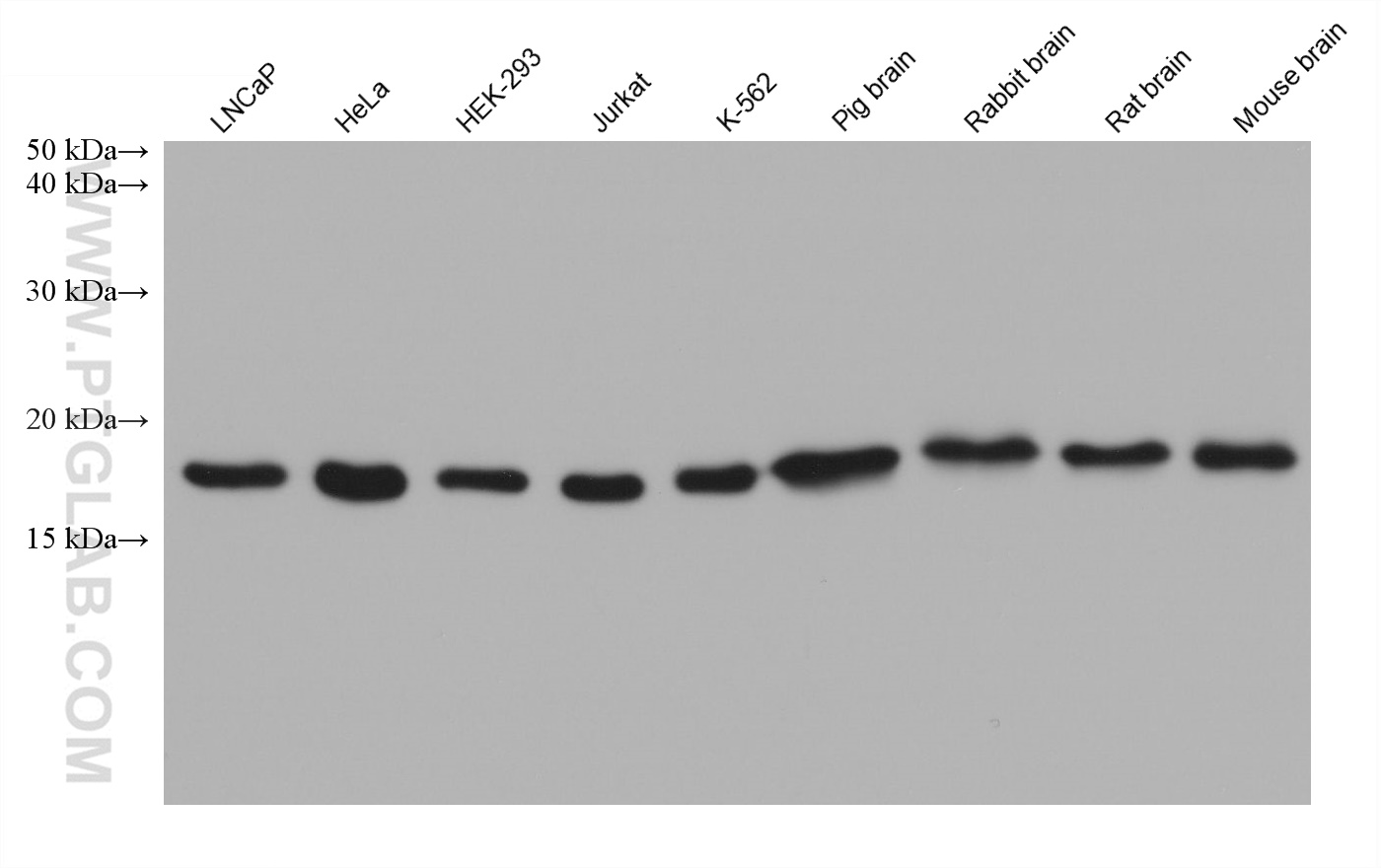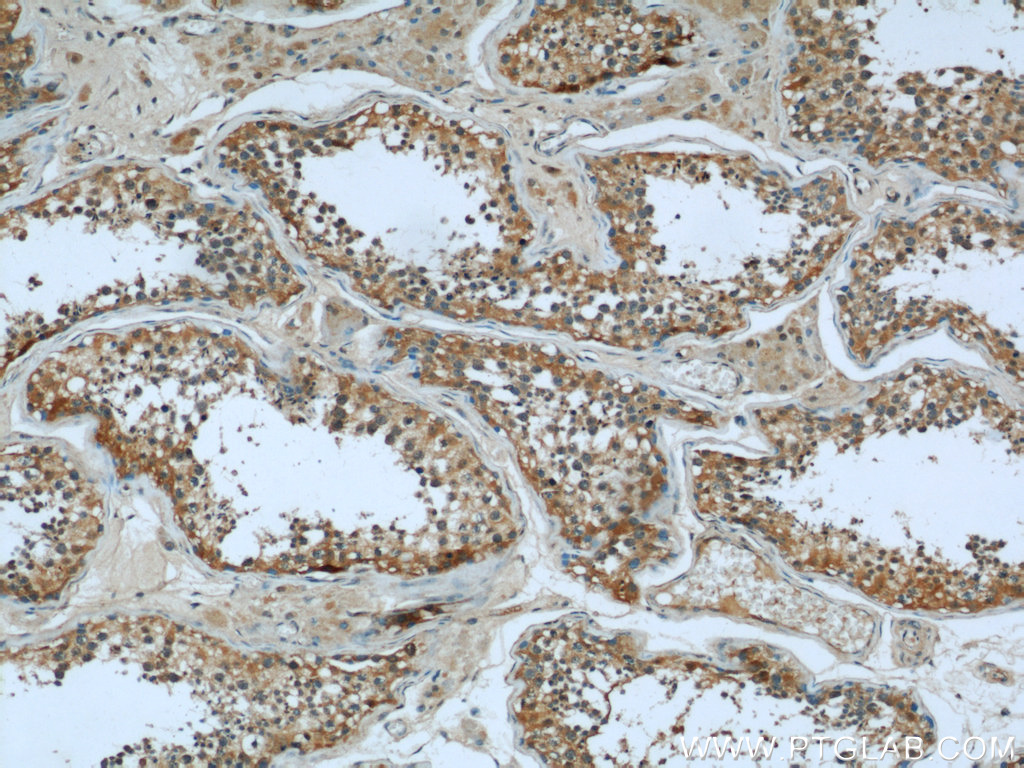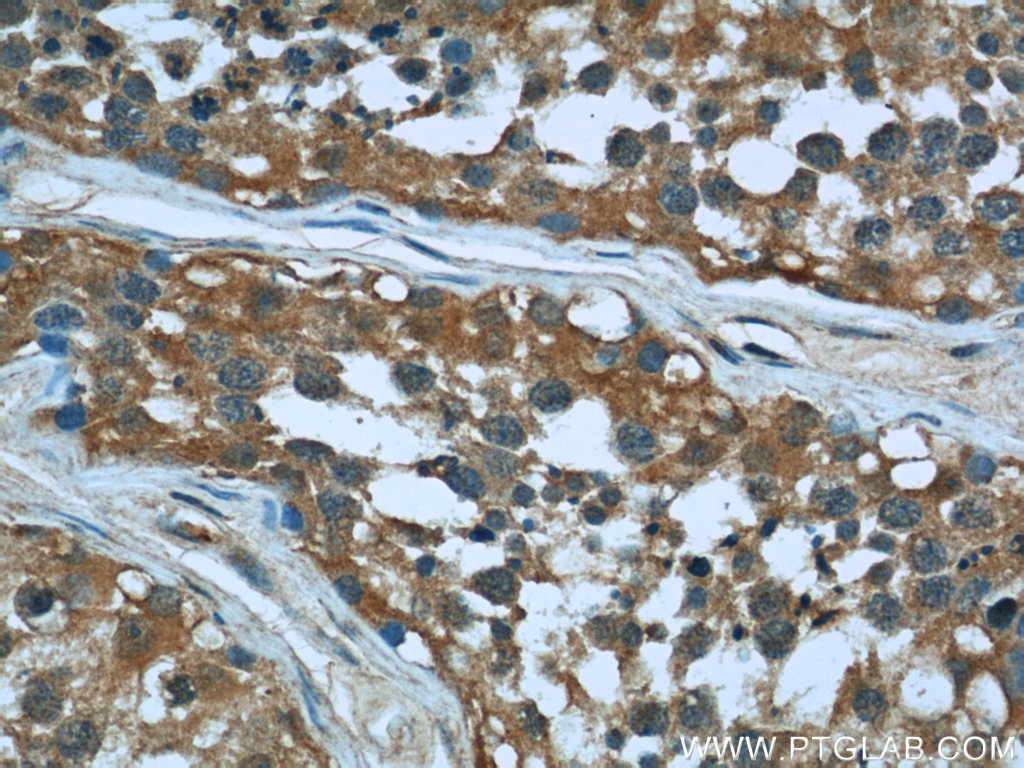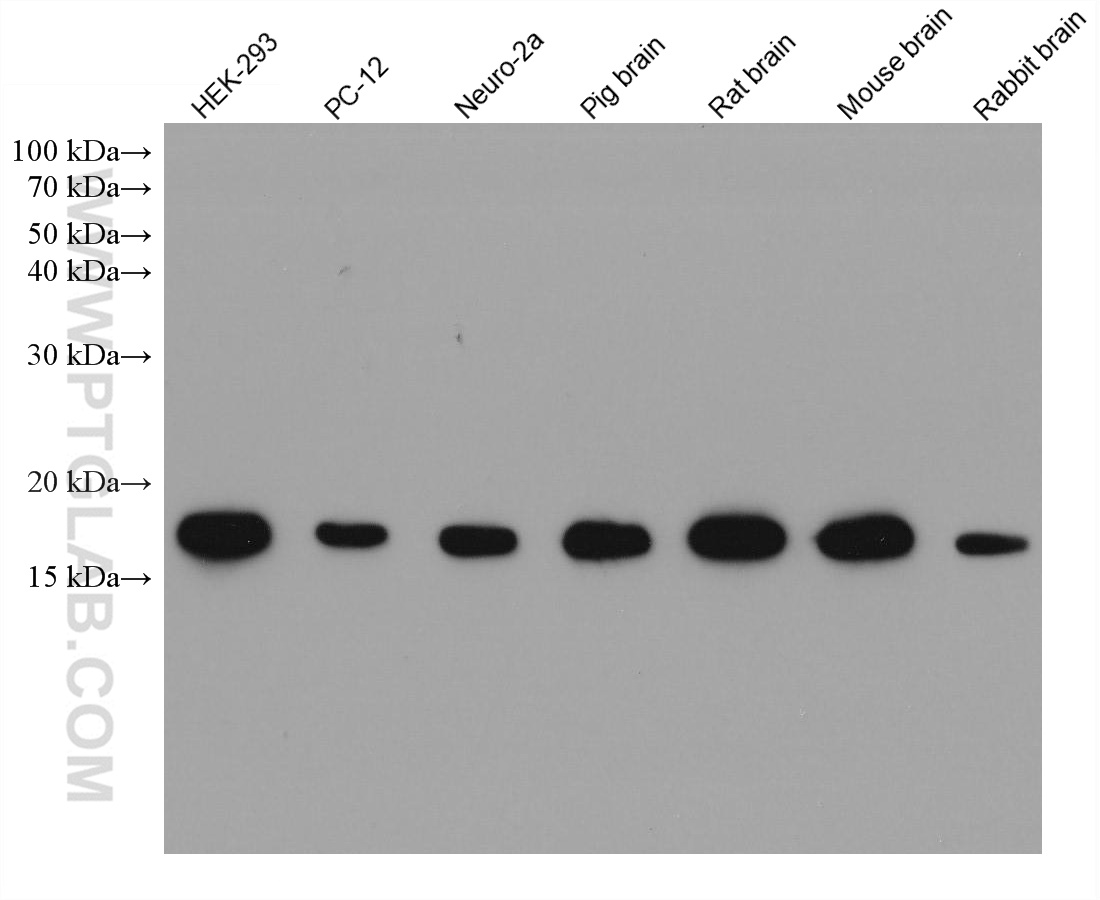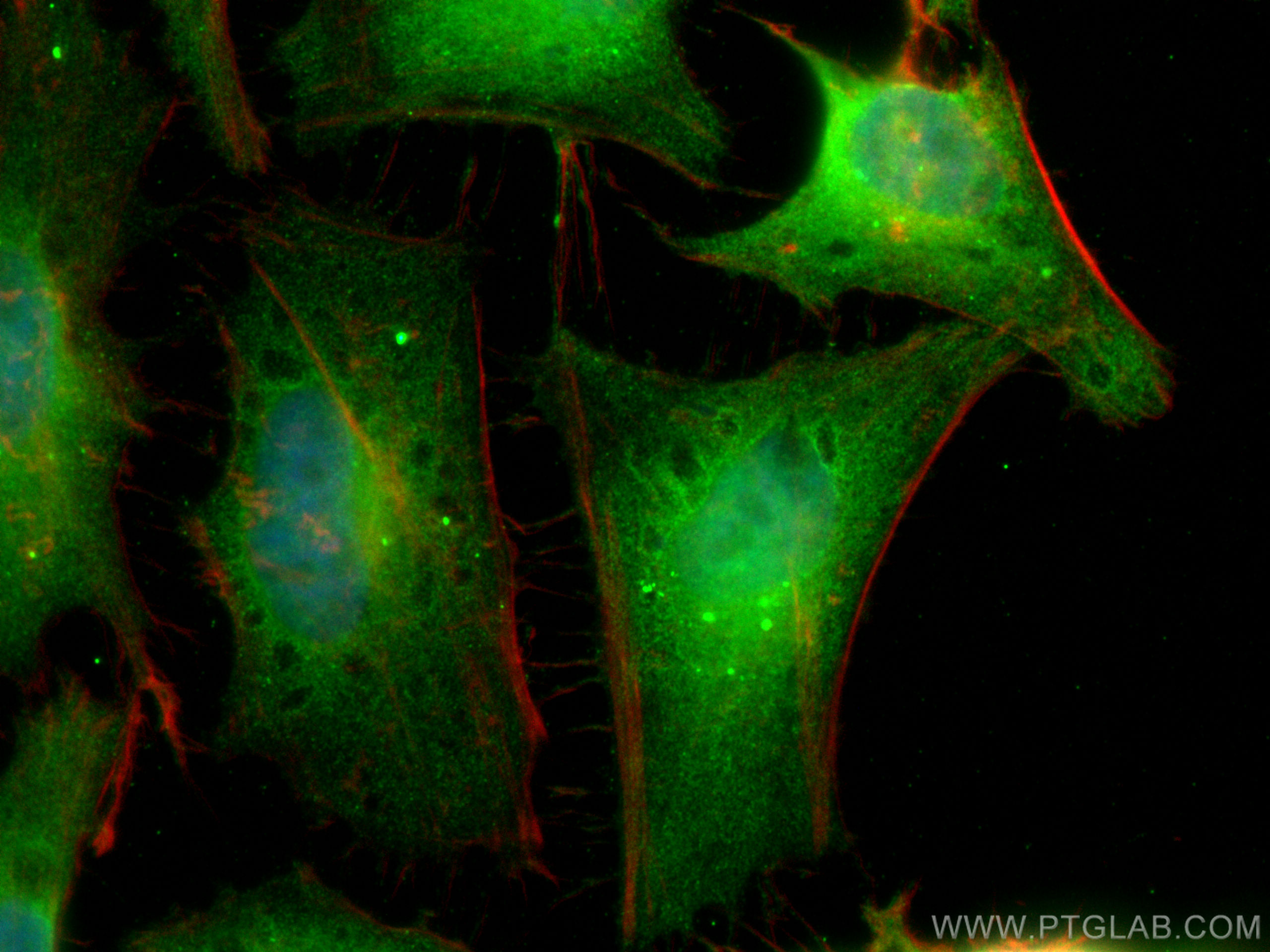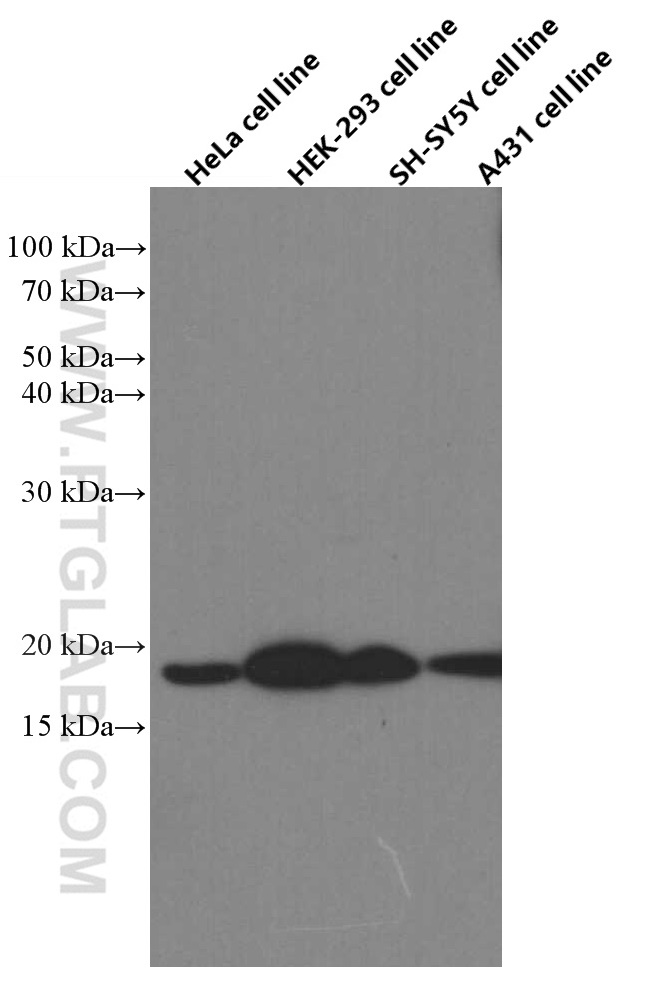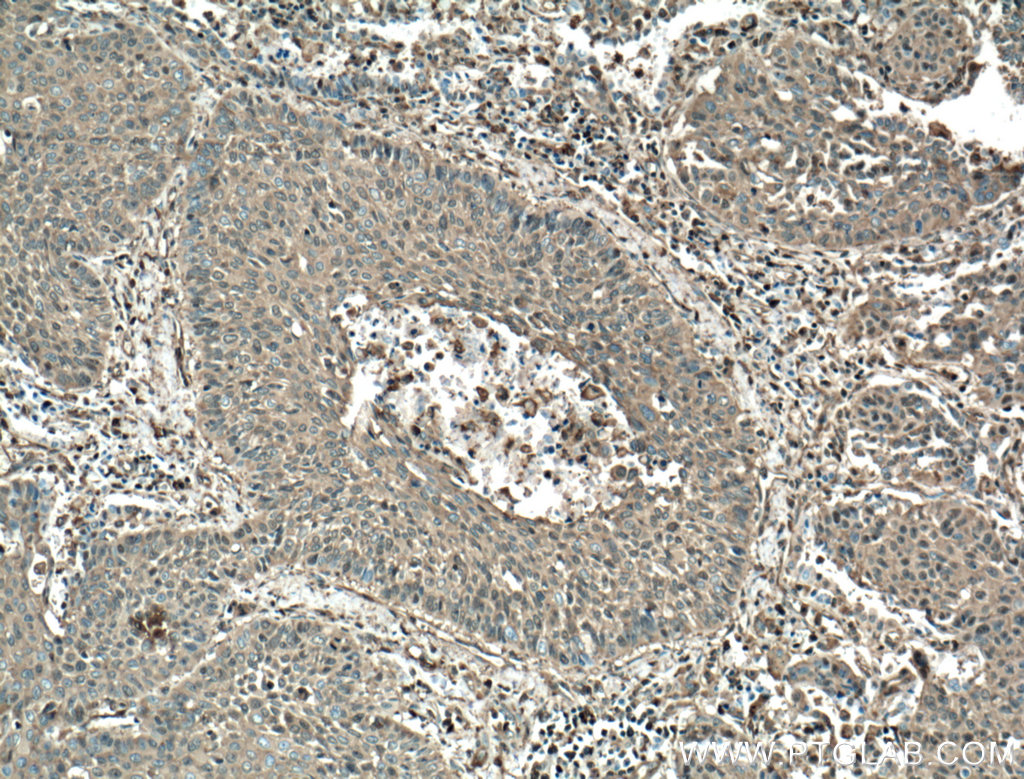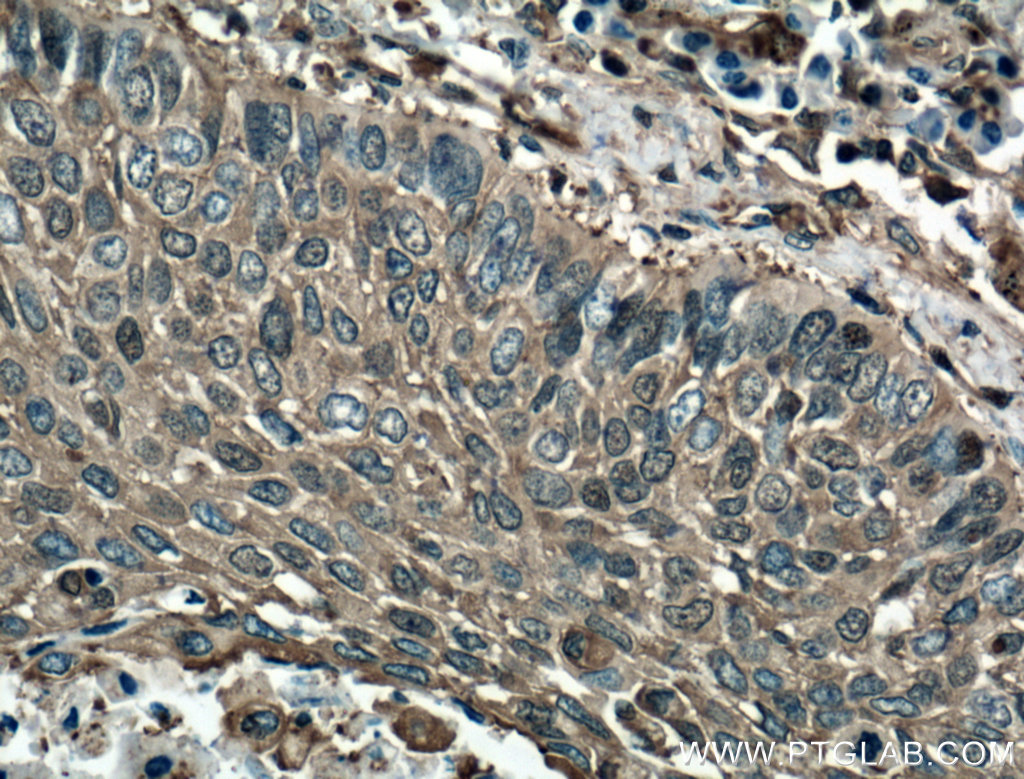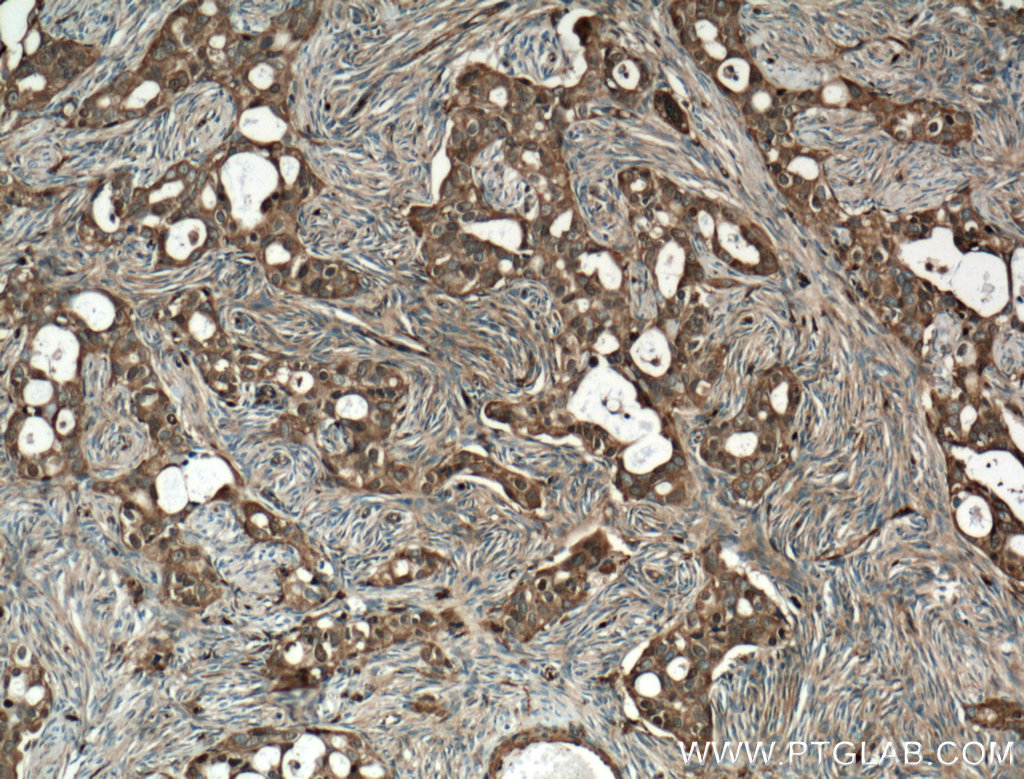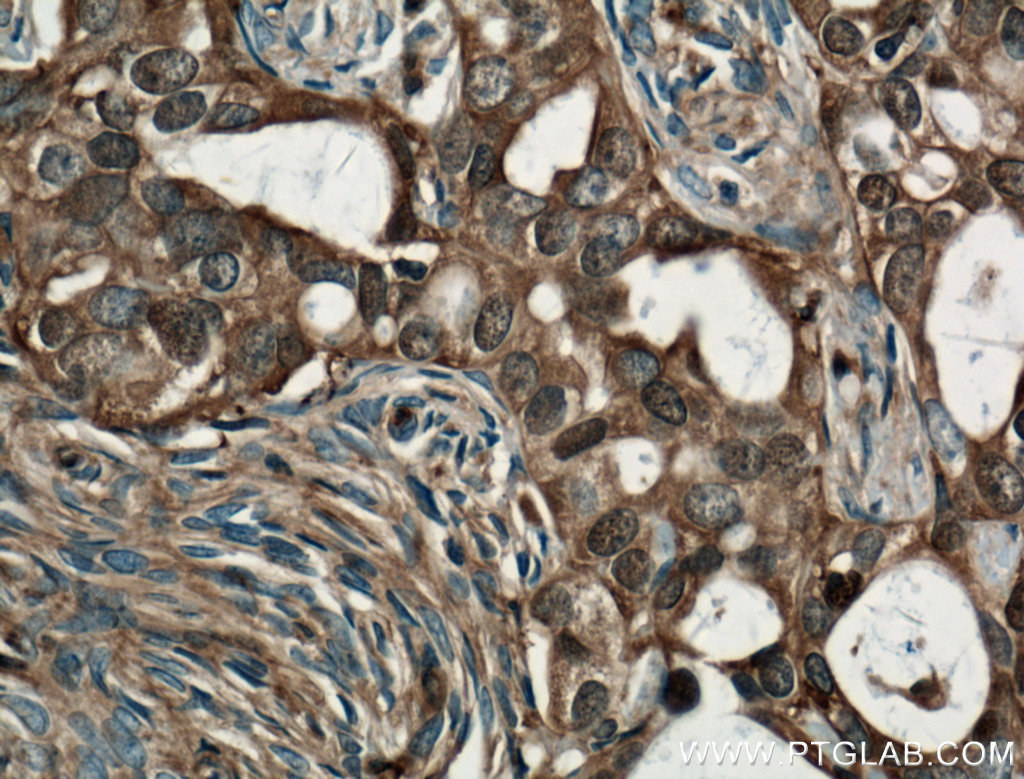验证数据展示
经过测试的应用
| Positive WB detected in | LNCaP cells, HeLa cells, HEK-293 cells, Jurkat cells, K-562 cells, pig brain tissue, rabbit brain tissue, rat brain tissue, mouse brain tissue, SH-SY5Y cells, A431 cells, PC-12 cells, Neuro-2a cells |
| Positive IHC detected in | human testis tissue, human lung cancer tissue, human ovary tumor tissue Note: suggested antigen retrieval with TE buffer pH 9.0; (*) Alternatively, antigen retrieval may be performed with citrate buffer pH 6.0 |
| Positive IF/ICC detected in | HeLa cells |
推荐稀释比
| 应用 | 推荐稀释比 |
|---|---|
| Western Blot (WB) | WB : 1:5000-1:50000 |
| Immunohistochemistry (IHC) | IHC : 1:20-1:200 |
| Immunofluorescence (IF)/ICC | IF/ICC : 1:400-1:1600 |
| It is recommended that this reagent should be titrated in each testing system to obtain optimal results. | |
| Sample-dependent, Check data in validation data gallery. | |
产品信息
66057-1-Ig targets Cofilin in WB, IHC, IF/ICC, IP, ELISA applications and shows reactivity with human, mouse, rat, pig, rabbit samples.
| 经测试应用 | WB, IHC, IF/ICC, ELISA Application Description |
| 文献引用应用 | WB, IF, IP |
| 经测试反应性 | human, mouse, rat, pig, rabbit |
| 文献引用反应性 | human, mouse, rat |
| 免疫原 |
CatNo: Ag18044 Product name: Recombinant human Cofilin protein Source: e coli.-derived, PET28a Tag: 6*His Domain: 1-166 aa of BC012318 Sequence: MASGVAVSDGVIKVFNDMKVRKSSTPEEVKKRKKAVLFCLSEDKKNIILEEGKEILVGDVGQTVDDPYATFVKMLPDKDCRYALYDATYETKESKKEDLVFIFWAPESAPLKSKMIYASSKDAIKKKLTGIKHELQANCYEEVKDRCTLAEKLGGSAVISLEGKPL 种属同源性预测 |
| 宿主/亚型 | Mouse / IgG2a |
| 抗体类别 | Monoclonal |
| 产品类型 | Antibody |
| 全称 | cofilin 1 (non-muscle) |
| 别名 | CFL1, Cofilin1, Cofilin, non-muscle isoform, Cofilin 1, 1G6A2 |
| 计算分子量 | 18 kDa |
| 观测分子量 | 18 kDa |
| GenBank蛋白编号 | BC012318 |
| 基因名称 | Cofilin |
| Gene ID (NCBI) | 1072 |
| RRID | AB_11043339 |
| 偶联类型 | Unconjugated |
| 形式 | Liquid |
| 纯化方式 | Protein A purification |
| UNIPROT ID | P23528 |
| 储存缓冲液 | PBS with 0.02% sodium azide and 50% glycerol, pH 7.3. |
| 储存条件 | Store at -20°C. Stable for one year after shipment. Aliquoting is unnecessary for -20oC storage. |
背景介绍
Cofilin is a ubiquitous actin-binding protein required for the reorganization of actin filaments. It is a member of ADF (actin-depolymerizing factor)/cofilin family that is a key regulator of actin dynamics and essential for cellular motility, cytokinesis, and endocytosis. Cofilin activity is tightly regulated by phosphorylation and dephosphorylation. Phosphorylation at Ser3 can inhibit its activity, also causing translocation from the nucleus to the cytoplasm.
实验方案
| Product Specific Protocols | |
|---|---|
| IF protocol for Cofilin antibody 66057-1-Ig | Download protocol |
| IHC protocol for Cofilin antibody 66057-1-Ig | Download protocol |
| WB protocol for Cofilin antibody 66057-1-Ig | Download protocol |
| Standard Protocols | |
|---|---|
| Click here to view our Standard Protocols |
发表文章
| Species | Application | Title |
|---|---|---|
Nat Commun N-terminal α-amino SUMOylation of cofilin-1 is critical for its regulation of actin depolymerization | ||
Mol Psychiatry Phosphoproteomic of the acetylcholine pathway enables discovery of the PKC-β-PIX-Rac1-PAK cascade as a stimulatory signal for aversive learning. | ||
Nat Commun Nuclear-capture of endosomes depletes nuclear G-actin to promote SRF/MRTF activation and cancer cell invasion. | ||
Nat Commun Dendritic autophagy degrades postsynaptic proteins and is required for long-term synaptic depression in mice. | ||
Elife Giant ankyrin-B mediates transduction of axon guidance and collateral branch pruning factor sema 3A | ||
Int J Nanomedicine Protein Nanoparticle-Related Osmotic Pressure Modifies Nonselective Permeability of the Blood-Brain Barrier by Increasing Membrane Fluidity. |

